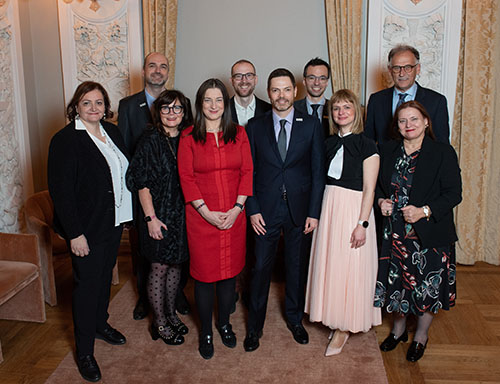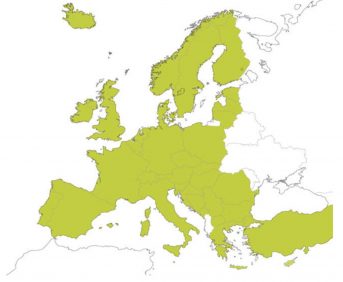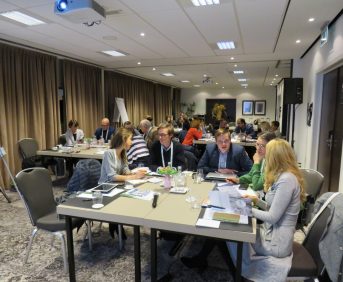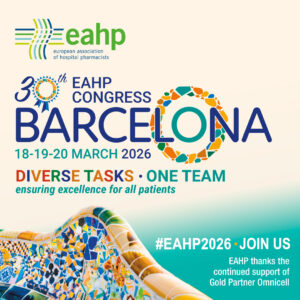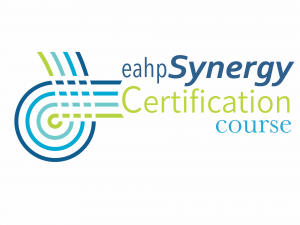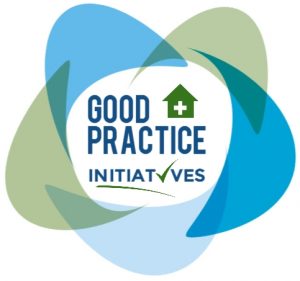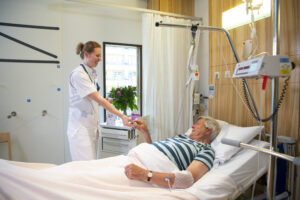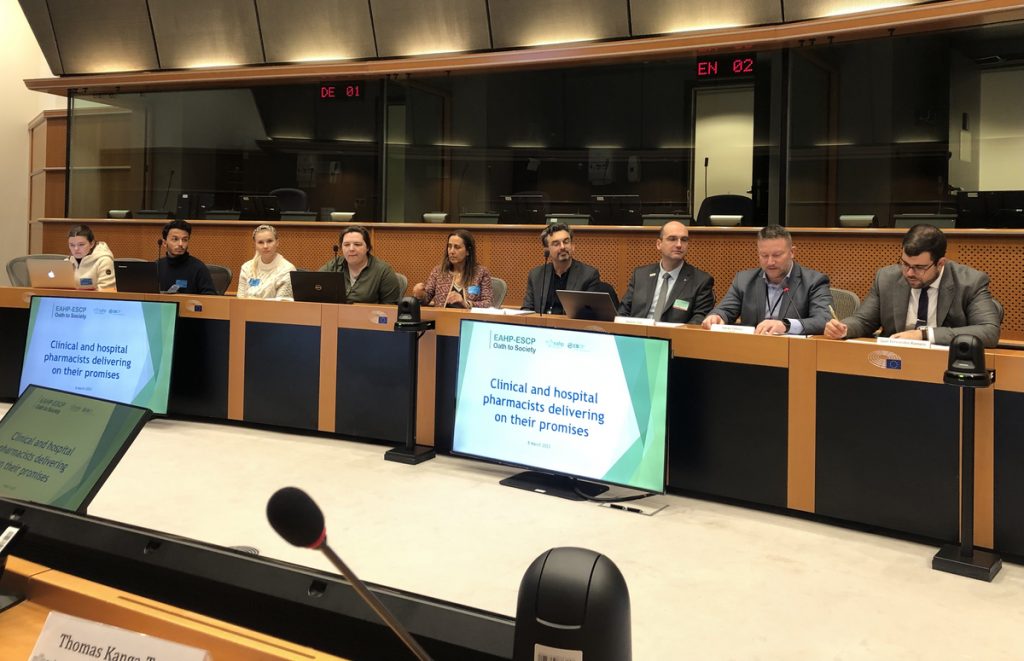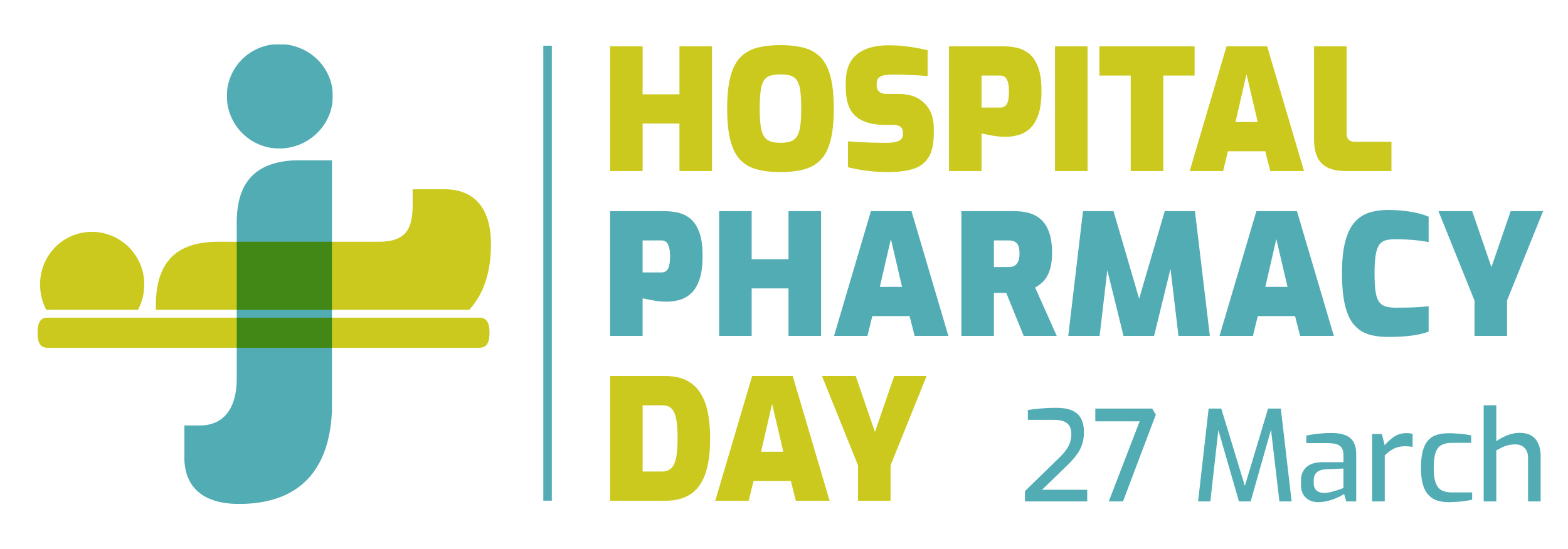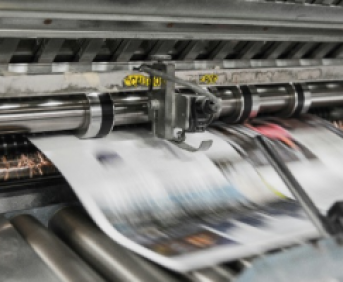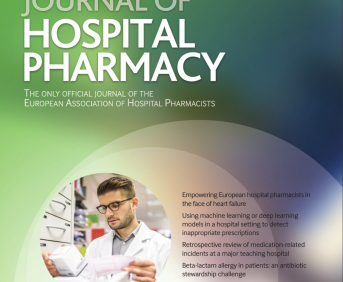Implementation of a Ph. Eur. compliant recombinant method for testing of bacterial endotoxins in sterile pharmaceuticals
Pdf

European Statement
Production and Compounding
Author(s)
Randi Hamre Svendsen, Vilde Pettersen, Theo Dogbeten
Why was it done?
Endotoxin testing by the gel-clot method is a limit test and relies on the operator’s subjective evaluation of the results. The procedure itself contains several steps and dilutions, and it is time and resource consuming. The availability of the amoebocyte lysate reagent can also vary since it is harvested from the endangered horseshoe crab. The recombinant factor C method (rFC) is a fluorimetric method based on the gene sequence of the horseshoe crab, providing quantitative results with no interpretation by an operator. The rFC method consists of less handling and is less susceptible to human error.
What was done?
The hospital pharmacy implemented a modern system for testing of bacterial endotoxins as a part of the quality control of raw materials (i.e. water for injection (WFI)) and sterile pharmaceuticals manufactured at the pharmacy, replacing the old gel-clot test.
How was it done?
All sterile pharmaceuticals manufactured at the hospital pharmacy were evaluated for maximum valid dilution (MVD) and endotoxin limit. Firstly, the optimal dilution of the products was established, and then tested with three different batches to ensure valid results regardless of any batch-to-batch variation. WFI was validated undiluted with batches from three separate days. Validation started with the most frequently manufactured products, and subsequently continued over the next year with the rest. To expedite the full validation of some products, expired batches were used simultaneously with at least one recently produced batch due to infrequent production times, otherwise a full transfer of method would not be achieved for up to six years.
What has been achieved?
In total, 25 sterile pharmaceuticals and raw materials were successfully validated for endotoxin testing by rFC during 2021 and 2022. The gel-clot method is no longer in use at the hospital pharmacy, reducing the negative impact on the horseshoe crab population. The rFC method streamlined the testing for endotoxins, reducing the time spent on performing the analysis by 50% with less handling and increased capacity. Results are quantitative and objective, not relying on observations by the operator, thereby improving the quality.
What next?
The rFC method increases both quality and capacity of testing, opening up for expanded testing in pharmacy, and of samples from other departments or hospitals.
Optimising the process for incoming requests for new extemporaneous products
Pdf

European Statement
Production and Compounding
Author(s)
Mette Lethan, Tove Hansen, Louise Rasmussen Duckert, Trine Schnor
Why was it done?
In the clinic, a need for a NEP, as either a change in an existing product or a new formulation, may arise. Requests are risk assessed by the Hospital Pharmacy Drug Information Centre (DIC) before production is initiated. However, there was no clear process for handling requests, resulting in prolonged process times. NEP may require searching for new raw materials, new packaging or developing of a new formulation, which are time consuming tasks. Therefore, the wish to optimise the process arose.
What was done?
A procedure for handling requests for new extemporaneous products (NEP) in a Good Manufacturing Practice (GMP) regulated production was developed to improve success rate and aligning the process.
How was it done?
A small unit was formed with the purpose of handling requests for NEP. The unit consists of academics employed in the production department with expert knowledge about both sterile and non-sterile production.
A standard operating procedure was formed, in collaboration with DIC, which included a form, to be filled out with information needed for handling the request. This includes drug formulation, strength and dosage, along with any specific requirements.
The unit evaluates the request – is it possible for us to manufacture, sterile or non-sterile, are raw materials available in appropriate quality, analysis requirements, and stability of the product. The evaluation is made in communication with departments like Purchasing, Quality Control/Assurance, Stability as well as the relevant production department.
If a positive outcome, the request is given to the production department, to finalise production. If the outcome is negative a rejection is sent to the requester with a reason.
What has been achieved?
Based on data from the last three years, we now know how many requests we receive, which type of products are requested, processing times, and which products were made and why/why not.
There is a clear path of communication into the pharmacy and between relevant departments, ensuring that essential pharmaceuticals will be developed in a timely manner or a justified rejection is sent enabling the clinic to look for alternatives.
What next?
Some products are difficult to handle, such as cytostatics, antibodies and hormones. Next step is to investigate these product types.
DEVELOPMENT OF A PROTOCOL TO STANDARDISE CELL-BASED MEDICINAL PRODUCTS HANDLING IN AN ONCO-HAEMATOLOGY CLINICAL TRIALS UNIT
Pdf

European Statement
Patient Safety and Quality Assurance
Author(s)
JOSE MANUEL DEL RIO GUTIERREZ, EUGENIA SERRAMONTMANY MORANTE, SARA GIMENEZ GINER, PILAR ROVIRA TORRES, PATRICIA GARCIA ORTEGA, CARLOTA VARON GALCERA, ISABEL CIDONCHA MUÑOZ, MARIA QUERALT GORGAS TORNER
Why was it done?
One of the most important challenges we currently face is the increase of clinical trials (CTs) including CBMPs. These drugs require special storage, preparation, delivery and administration; so developing standard operating procedures (SOPs) and ensuring proper coordination between all professionals involved, including pharmacists, is essential.
What was done?
Management of cell-based medicinal products (CBMPs) was protocolised in an onco-haematology clinical trials unit.
How was it done?
Pharmacists, doctors and nurses participate in a multidisciplinary team to standardise CBMPs handling. The following protocol was agreed:
1.The entire multidisciplinary team is notified when a CBMP prescription is planned to ensure proper coordination.
2.The CBMP is manufactured by the CT sponsor. Then, it is transferred to the blood bank for cryopreservation. CBMPs usually require a temperature between -80ºC and -200ºC and expire in some weeks.
3.Before CBMP administration, patients undergo lymphodepletion. The lymphodepletion regimen is performed according to the CT protocol or arranged between medical and pharmacy teams. Chemotherapy, serum therapy and antiemetic regimen are discussed and specified.
4.Once the treatment is prescribed, it is verified by a pharmacist who ensures its suitability.
5.On the infusion day, the blood bank delivers the CBMP. Then, a pharmacist checks if it arrives in proper condition and it is defrosted. The pharmacy department reconditions the CBMP in another infusion bag or syringe if required. This is the most critical point because CBMP expires after some minutes of defrosting, requiring extensive coordination.
6.CBMP is administered according to the CT protocol.
What has been achieved?
72 patients were recruited in 15 CT. 8 of them use as CBMP Chimeric Antigen Receptor T-Cells (CAR-T-CELLS), 4 Specific Peptide-Enhanced Affinity Receptor T-Cells (SPEAR-T-CELLS), 2 Tumour-Infiltrating Lymphocytes (TILs) and one cytokine-stimulated Natural-Killer-Cells (CS-NK-CELLS). Seven assays are intended for haematological neoplasms and eight for solid malignant neoplasms. One assay requires CBMP syringe reconditioning in the pharmacy department.
The described process optimises CBMPs handling, avoids delays in administration and reduces the risk of misuse.
What next?
CBMPs represent a novel therapy, and pharmacists have an essential role in developing new procedures to incorporate them into clinical practice. This protocol may be helpful for other centres to implement guidelines to work with CBMPs.
Evaluation of a robotic compounding system for the preparation of non-hazardous ready to administer sterile products in a tertiary care hospital
Pdf

European Statement
Production and Compounding
Author(s)
Clara Estaún-Martínez, Catalina Perelló-Alomar, Ángela Bueno, Naiara Tellería, Olga Delgado-Sánchez
Why was it done?
Automated compounding emerges as an alternative for manual compounding, making possible the centralisation of standardised compounded medications in hospital pharmacy aseptic services at a larger scale. This provides sterile, high-quality, safe, traceable ready to administer products to clinical units. Additionally, it could free up nursing time for patient care instead of performing pharmaceutical work.
What was done?
We evaluated productivity, dose accuracy and environmental monitoring of KIRO Fill®, a robotic compounding system (RCS). We also assessed the microbiological results of the sterility tests performed.
How was it done?
We implemented a RCS equipped with ISO 5 aseptic environment, horizontal airflow with HEPA filters and continuous monitoring of: air flow operation, non-viable particle counts (limits for ISO Class 5 are 0.5μm and larger size: not more than 3.520 particles/m3, and 5μm and larger size: not more than 20 particles/m3) and temperature (not more than 25°C). Two automated units work in parallel handling transfer syringes to withdraw solutions from source containers (SC) and fill final containers (syringes or infusion bags) via Luer Lock connections. This technology allows barcode/data matrix verification of source and final containers used and RFID for in-process tracking. An integrated scale is responsible for gravimetric control of the compounded preparations within an acceptable ± 5% error range. Gri-Fill® filling system was used for the preparation of SC.
Drug verification was assured through drug workflow management system and datamatrix verification in RCS.
We performed sterility test of all batches and physicochemical stability studies were developed when not available in the literature.
What has been achieved?
Between January 2022 and September 2022, we have prepared with RCS 2.813 syringes of norepinephrine (base) 0,2 mg/ml in normal saline for critical care unit syringe pumps and 395 morphine hydrochloride 1mg/ml normal saline 250 ml infusion bags for patient-controlled analgesia (PCA) administered in the surgical area.
The average dose accuracy errors for syringes and infusion bags were 0.23% and –0.09%, respectively. Environmental monitoring results and temperature controls met our standards at all times.
Results from sterility tests demonstrated the absence of microbial growth in all tested preparations
What next?
Overall satisfactory results when compounding sterile preparations using KIRO Fill and the positive feedback received from nurses in clinical units, have led us to incorporate new batches, such as morphine syringes for critical care unit syringe pumps, to the production with the RCS. Stability studies are currently being performed for this purpose.
Development of standard kits with utensils for outpatient parenteral antibiotic therapy
Pdf

European Statement
Production and Compounding
Author(s)
Louise Rasmussen Duckert, Marianne Kjettrup Jensen, Mette Lethan, Trine Schnor
Why was it done?
The hospital pharmacy wishes to support the implementation of OPAT and during the process the need for standardised kits with utensils was identified. The availability of kits with necessary utensils for aseptic handling of parenteral infusion would simplify and standardise the work for hospital and home nurses. Considerations regarding patient safety and sustainability were also in favour of the kits, as choice of utensils could secure compliance to regional guidelines considering use of closed systems and rinse of the line after infusion. Kits containing the exact needed utensils for an administration also reduces the possible waste.
What was done?
The hospital pharmacy has composed standard kits with utensils for outpatient parenteral antibiotic therapy (OPAT).
How was it done?
The kit is composed in collaboration between the pharmacy, hospital nurses and home nurses. The best suited infusion set was chosen – a closed system with two spikes for antibiotic mixing and infusion. Hereby nurses avoid direct contact with antibiotics and avoid antibiotic aerosols in the citizen’s home. The infusion set contains no PVC, phthalates or latex. When fully emptied the infusion set can be discarded as regular waste.
The kit also contains a sterile cover for the workstation, sterile ethanol swabs, gloves, pre-filled saline syringes for rinse of the line after infusion and a written manual. All is packed and labelled by the hospital pharmacy and lot numbers are registered for traceability.
What has been achieved?
The kits have been tested in selected municipalities and the content of the kit has been adjusted. As a result of the feedback a film has been recorded showing the handling of the infusion set. The video is used for training and a QR code on the written manual guides the home nurse to the video if needed. The kit is now used widely in the region and response is positive. With the set-up being identical in all municipalities in the region, handling antibiotics and utensils is simpler for the hospital nurse at discharge.
What next?
As the number of patients in home-based OPAT rises, experiences with the kits will probably result in wishes for adjustments. A new kit with utensils for changing PVK is under development.
Assessment of the safety of advanced therapy medicinal products (ATMP) process: a tutorial video creation module
Pdf

European Statement
Patient Safety and Quality Assurance
Author(s)
Chloé JADOUL, Audrey DURAND, Rémy TORDJEMAN, Isabelle MADELAINE, Romain de JORNA
Why was it done?
With the development of advanced therapy medicinal products (ATMPs), a specific pharmaceutical process is necessary to secure the handling of genetically modified organisms. Gene therapy includes Chimeric Antigen Receptor T (CAR-T) cell therapy as well as clinical trials with oncolytic viruses and nucleic acids. Limited experience on these new activities and high staff turnover based on resident pharmacist explain the need of additional training material to supplement written procedures. Multimedia support seems to be the most appropriate didactic tool.
What was done?
The objective of this work is to create pedagogical tools as short video clips. The final aim is to standardise hands-on training in order to improve ATMPs circuit safety.
How was it done?
All steps of each activity were listed and filmed in order to create a video database. Clinical trial mock preparations were performed to create the clinical trial tutorials whereas CAR-T cell activities were filmed in real conditions.
Clipchamp (Microsoft) video editing software is used to create tutorial videos. Repetitive parts were edited once and reused for other videos. They are part of the database videos.
As a validation, all staff members’ approbation was required.
What has been achieved?
Activities include, to this day, five gene therapy clinical trials and the CAR-T cell activities: reception, shipment to the pharmaceutical hub, thawing and distribution.
We filmed 55 step clips and edited six repetitive parts. Finally, eight tutorial videos were created: three for clinical trials and four for different CAR-T cell activities.
To make the training more meaningful, we made dynamic videos that last no more than 5 minutes. The average time of a tutorial was 2 minutes 17 seconds.
What next?
The tutorial videos bank is created to be dynamic and can be easily adjusted. Videos of repetitive parts will be reused for new clinical trials implementation. These video tutorials allow new resident, student or technicians to be trained faster and in a more innovative way. They also allow permanent teams to benefit from a quick refresh. In order to assess the efficiency of this new process, next operators will have to read the procedure, watch the videos and will be evaluated in practice.
Sustainability initiative: dose banding of paclitaxel to minimise drug waste
Pdf

European Statement
Production and Compounding
Author(s)
Peder Nygard, Helle-Brit Fiebrich-Westra, Elise Smolders
Why was it done?
The aim of this project was to reduce paclitaxel waste caused by cancellation of administrations. Standardised dose bands make interchangeability of already reconstituted paclitaxel bags easier, as more patients use the same dose. This could potentially save drug- and material waste and costs even as manpower.
What was done?
Paclitaxel fixed dose bands were created for patients treated with a weekly dose of 80 mg/m2.
How was it done?
In consultation with prescribers the dose bands for paclitaxel where created (see table). These dosages were implemented as a dose-rounding rules in the drug preparation software (Hix 6.2, ChipSoft BV). The maximum deviation for dose-rounding rules for paclitaxel in our hospital is 10% of the prescribed dose. Dosage ≤72mg or >200mg were rounded as normal.
Prescribed dose (mg) Dose-band (mg) m2 (dose 80 mg/m2
>72 ≤88 78 1.0
>88 ≤102 96 1.2
>102 ≤116 114 1.4
>116 ≤136 126 1.6
>136 ≤152 144 1.8
>152 ≤168 162 2.0
>168 ≤184 174 2.2
>184 ≤200 192 2.4
What has been achieved?
These rules were implemented in April 2022. Data from 1 May 2022 to 31 August 2022 is compared with the same time period in 2021. In 2022, a total of 729 infusions where prepared compared with 872 infusions in 2021.
In this 4 month time period in 2022 a total of 14 different dosages were prescribed, compared with 24 in the same time period in 2021. Additionally, interchangeability was improved as the top 3 dosages prepared by the pharmacy were: 144 mg (36%), 162 mg (22%), and 126 mg (19%) compared with 144 mg (17%), 138 mg (14%), and 126 mg (10%) in 2021.
Furthermore, in 2021 we discarded 33 prepared dosages of paclitaxel of which three infusions could be reused. Compared to 13 discarded dosages in 2022 of which eight were reused giving a reduction of 25 infusions less waste (83% reduction, savings ~2500 euros).
What next?
Pharmacists need to be instructed to adapt these rounding rules, which must decrease the variation in dosages and thus waste. Secondly, this project will be monitored the upcoming year and evaluated together with prescribers. The aim is to implement dose bands for paclitaxel dosages 175 mg/m2 and other chemotherapeutic drugs (eg, oxaliplatin, docetaxel, cyclophosphamide).
Automated preparation of oncology drugs in an Italian cancer center: Evaluation of productivity, errors interception, and waste reduction achieved by managing vials overfill
Pdf

European Statement
Production and Compounding
Author(s)
Caterina Donati, Giulia Moroni, Matteo Federici , Paolo Silimbani
Why was it done?
To evaluate the performances of automated preparation in the oncology pharmacy by assessing productivity, errors interception, and waste reduction achieved by managing vials overfill.
What was done?
Automated preparation, operated by two robots and one gravimetric-assisted workflow system, was introduced to improve productivity and working efficiency [1,2], while reducing the risk of human errors. Furthermore, to optimize resources utilization and reduce waste, a procedure for managing overfill of drug vials during automated preparations was implemented. Indeed, manufacturers fill injectable drug vials with a volume that slightly exceeds the nominal volume (overfill) to ensure proper withdrawing and patient dosing.
How was it done?
The annual throughput in terms of preparations was calculated for automated and manual preparation. Human errors intercepted during automated preparation were clustered into four groups: loading of wrong component (i.e. final container, solvent, drug product), multiple barcodes reading, failed manual reconstitution, wrong expiration date. Overfill was calculated for 17 high-cost drug vials by volumetric verifications performed by experienced pharmacy technicians. The annual number of vials used and the corresponding waste reduction due to the overfill management was determined. All data were taken from the production management software and examined over a two-year period (2019-2020).
What has been achieved?
In total, 82,216 preparations were compounded over two years, 72% of which with robotic systems and 28% manually prepared, either with gravimetric-assisted workflow (13%) or conventional volumetric technique (15%). Overall, automated preparation covered 85% of the total production. The human errors intercepted during automated preparation amounted to 701 in 2019 and 662 in 2020. Most errors were intercepted by robotic systems and were related to loading of wrong component (83%). Vials overfill ranged from 0.2mL (ramucirumab, eribulin, trastuzumab-emtansine, pembrolizumab, nivolumab) to 2.5mL (ipilimumab). The total waste reduction due to overfill management resulted in 1331 vials saved corresponding to 855,013€.
What next?
The study showed that automated preparation of oncology products represents a well-established practice in terms of productivity, and moreover ensuring interception of potential medication errors and waste reduction thanks to the overfill management
Physicochemical and biological stability study of mogamulizumab in diluted solution
European Statement
Production and Compounding
Author(s)
Emma Pinet, Lionel Barty, Anne Blandine Bouvrain, Françoise Le Cheviller, Nicolas Vaillant, Nathalie Jourdan, Hélène Sauvageon, Isabelle Madelaine
Why was it done?
In order to make hospital preparations in advance and optimize costs, a physicochemical and biological stability study was conducted in the pharmaceutical control laboratory.
What was done?
Mogamulizumab is a monoclonal antibody used in the treatment of Sezary syndrome and mycosis fungoides. The dilution of the 4 mg/ml vial of Poteligeo® in the infusion bag is stable for 24 hours at room temperature between 0.1 to 3 mg/ml.
How was it done?
Four bags of mogamulizumab were prepared in 0.9% NaCl 250 ml (2 at 0.14 mg/ml, 2 at 0.34 mg/ml). Each dilution is evaluated at 20±5°C and at 5±3°C, protected from light for 28 days. Analyses are performed in triplicate by High Performance Liquid Chromatography (HPLC-UV) associated with Chromeleon™ software. Concentrations are measured by HPLC after Flow Injection Analysis (FIA). Physical stability is studied by searching for IgG aggregates by Steric Exclusion Chromatography (Biozen™SEC3 column, 1.8µm 300*4.6mm). Chemical stability is evaluated by assessing acidic and basic variants proportions of the antibody by Cation Exchange Chromatography (CEC) (Biozen™WCX column, 6µm 250*4.6mm). Biological activity is determined by evaluation of the different glycoforms, by affinity chromatography (FcyRIIIa column, 5µm 75*4.6mm Tosoh®). The microbiological stability is performed by seeding the diluted solution on chocolate agar and brain heart broth.
What has been achieved?
At D28, the quantitative determination of mogamulizumab by FIA showed a deviation of less than 10% compared to theoretical concentrations. No aggregates or antibody fragments were found. The proportion of acidic, basic variants and of the main peak did not deviate by more than 5% compared to D0. For all infusion-bags studied by CEC, the main peak rates were between 79.1% and 85.8%, the acidic variant rates between 6.7% and 9.9% and the basic variant rates between 7.8% and 11.2%. The proportion of each antibody species (low, medium, high affinity) did not deviate by 5% from D0. The low affinity rate is between 48.2% and 52.7%, medium between 39.6% and 44.8% and high between 6.9% and 7.9%. No colonies were found on chocolate agar and heart-brain broth.
What next?
Mogamulizumab is physically, chemically and biologically stable for 28 days in diluted solution between 0.14 mg/L and 0.41 mg/L at 5°C and 20°C.
Use of a closed-system drug transfer device in the handling and administration of ganciclovir outside the hospital pharmacy unit
European Statement
Production and Compounding
Author(s)
Lucia Ricchi, Gregorio Medici, Porretta Serapiglia Carla, Marzia Bacchelli, Marianna Rivasi
Why was it done?
Hazardous drugs (HDs) may include antineoplastic or cytotoxic agents, biologic agents, antiviral agents, immunosuppressive agents, and drugs from other classes. Healthcare workers, especially nurses and pharmacy personnel, experience occupational exposure to these HDs.
Preparation and administration of ganciclovir should only be performed by health professionals who have been appropriately educated and trained and deemed competent in its use. Until now the preparation of ganciclovir was performed by the pharmacy’s antiblastic drugs unit. However, during closing times, kits for the self-preparation (antiblastic gloves and gowns, FFP3 masks, eye protections and brief instructions for reconstitution) were provided.
Many strategies have been deployed to reduce the risk of occupational exposure to HDs, including control devices designed to act as closed systems and preventing exposure through liquid or vapor leakage. These devices mechanically prohibit the escape of HDs from the system and can be used for preparing and administering these drugs.
What was done?
Some of the intensive care units of our hospital have been enabled to prepare their own ganciclovir bags by using a closed system drug transfer device (CSTDs).
How was it done?
Each nurse involved was instructed by hospital pharmacists on how to handle CSTDs. In addition to this they were also given a short video and an infographic showing the main operations to be carried out.
Ganciclovir bags are prepared using the Tevadaptor® (Simplivia), in a needleless technique, by combination of the Vial adaptor, the Syringe adaptor, the Spike port adaptor and a connector closed male (Spiros, ICU).
What has been achieved?
Use of CSTDs is a simple and effective way to reduce exposure to HDs, provide better protection, better aseptic technique and better containment of waste than the traditional method, as well as allows the preparation of HDs to be carried out outside the antineoplastic drug unit.
What next?
In the future their use could also be extended to the preparation of monoclonal antibodies and antibiotics considering that there is not enough definitive research on the effects of occupational exposure to these agents. And, to date, there is no known safe maximum level of exposure to these drugs.
